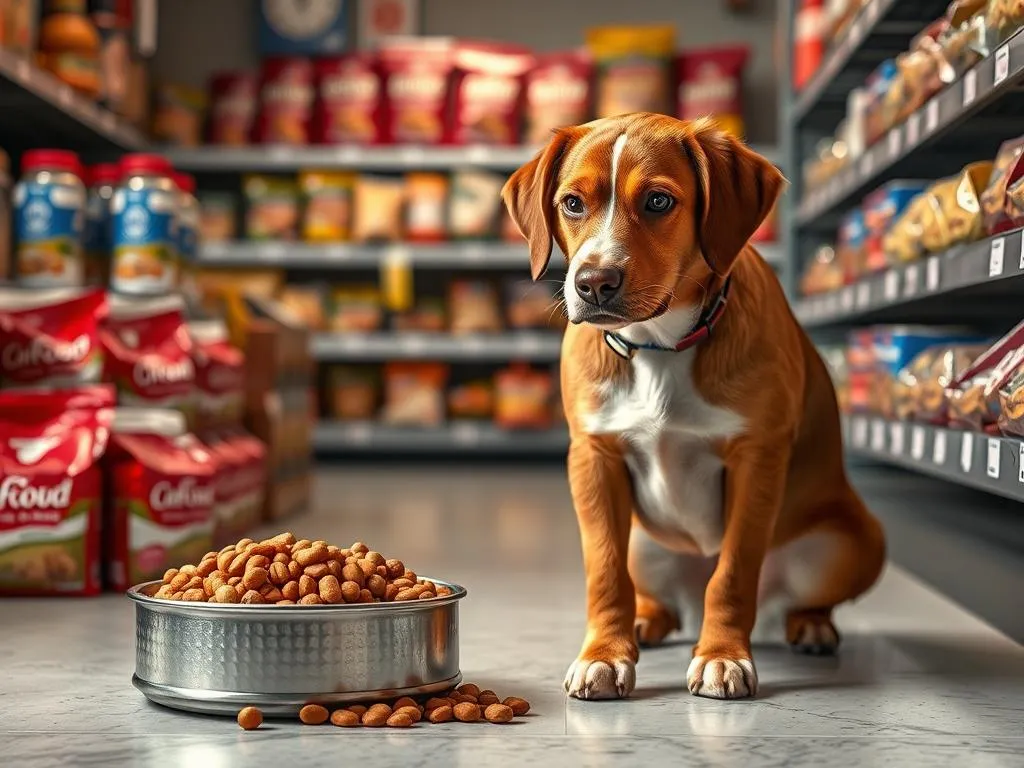
Introduction
Proper dog nutrition is crucial for your furry friend’s overall health and well-being. Just as we pay attention to our own diets, it’s essential to ensure that our pets receive the right nutrients to thrive. One often overlooked aspect of pet nutrition is how to store dog food. The way you store your dog’s food can significantly impact its quality, safety, and nutritional value, ultimately affecting your dog’s health.
Dog food comes in various forms, including dry, wet, and homemade options. Each type has its unique characteristics and storage requirements. This article aims to provide comprehensive guidelines on how to store dog food properly, ensuring that your pet receives the best nutrition possible.
Understanding Dog Food Types
Dry Dog Food (Kibble)
Dry dog food, commonly known as kibble, is a popular choice among pet owners due to its convenience and long shelf life. Kibble is typically made from a mixture of protein sources, grains, and vegetables. The benefits of dry dog food include ease of storage and serving, as well as the ability to help keep your dog’s teeth clean.
However, kibble often contains preservatives to maintain its freshness. Common preservatives include BHA, BHT, and ethoxyquin. While these additives help prevent spoilage, they can also affect how you should store the food. For example, exposure to moisture can cause mold growth, while heat can degrade the quality of the fats used in the kibble.
Wet Dog Food (Canned)
Wet dog food, often found in cans or pouches, is another option for pet owners. This type of food is generally more palatable for dogs and is rich in moisture, making it an excellent choice for hydration. However, once opened, wet dog food must be refrigerated to prevent spoilage.
It’s crucial to note that canned dog food has a shorter shelf life once opened, and proper storage is vital to ensure its safety and nutritional integrity.
Homemade Dog Food
Homemade dog food is becoming increasingly popular among pet owners who want to have complete control over their dog’s diet. While preparing meals at home allows you to customize ingredients for your dog’s specific needs, it also requires careful attention to storage. Homemade meals can spoil quickly, so understanding how to store dog food in this context is essential for your pet’s health.
Importance of Proper Storage
Nutritional Integrity
Improper storage can significantly affect the nutritional content of dog food. For example, exposure to air, light, and moisture can cause vitamins and minerals to degrade. When dog food loses its nutritional value, it can lead to deficiencies that negatively impact your dog’s health. Moreover, the shelf life of dog food can be reduced by poor storage practices, making it essential to follow the recommended guidelines.
Safety Concerns
Storing dog food incorrectly can pose safety risks. Spoiled or contaminated food can lead to serious health issues for your pet, including gastrointestinal distress and food poisoning. Signs of spoiled dog food include:
- Unpleasant smell
- Changes in texture (e.g., stickiness or clumping)
- Color changes or the presence of mold
Always inspect your dog’s food before serving, especially if it has been stored for an extended period.
Cost Efficiency
Proper storage practices can prevent food waste and save you money in the long run. By ensuring that dog food remains fresh and safe to eat, you can avoid the need to constantly purchase replacements due to spoilage.
General Storage Guidelines
Ideal Storage Conditions
The ideal storage conditions for dog food include:
- Temperature: Store dog food in a cool, dry place. Excessive heat can lead to spoilage.
- Humidity: Keep the environment low in humidity to prevent mold growth.
- Avoid direct sunlight: Sunlight can degrade the quality of both dry and wet dog food.
Containers for Dog Food
Choosing the right containers is essential for maintaining the quality of dog food. Here are some of the best options:
- Airtight bins: These are ideal for dry kibble, preventing air and moisture from degrading the food.
- Original packaging: If the bag is resealable, you can store it as is, but make sure to keep it in a dry place.
- Food-safe storage options: Always opt for containers made from food-safe materials to avoid leaching harmful chemicals.
Portion Control
Maintaining freshness can be aided by controlling portions. Consider these tips:
- Pre-portioning: Measure out daily servings and store them in individual containers.
- Label containers: Mark the date of opening on containers to keep track of freshness.
Storing Different Types of Dog Food
Storing Dry Dog Food
When storing dry dog food, follow these tips:
- Seal bags or containers tightly: Ensure that the bag is properly closed or that the container is airtight to keep moisture out.
- Recommended storage duration: Unopened kibble can last up to 12-18 months, while opened bags should be consumed within 6 weeks for optimal freshness.
Storing Wet Dog Food
For wet dog food, adhere to these guidelines:
- Refrigerate immediately after opening: Once a can is opened, refrigerate it and use it within 3-5 days.
- Use airtight containers for leftovers: Transfer any unused portions to a clean, airtight container to maintain freshness.
Storing Homemade Dog Food
When it comes to homemade dog food, consider the following:
- Cooling before refrigeration: Allow homemade food to cool completely before placing it in the fridge to avoid raising the internal temperature.
- Freezing options: You can freeze homemade meals for up to 3 months. Portion out meals for easy thawing and serving.
Common Mistakes in Dog Food Storage
Overlooking Expiration Dates
One of the most common mistakes pet owners make is ignoring expiration dates. Always check the labels and understand the shelf life of the food. Here are some tips for tracking expiration dates:
- Create a system: Use a calendar or reminders on your phone to keep track of when food was opened or purchased.
- Rotate stock: Use older food first to prevent spoilage.
Improper Container Choices
Using non-food-safe containers can pose risks:
- Avoid plastic bags: They do not provide adequate protection against air and moisture.
- Misconceptions: Some believe that glass containers are the best option; while they are food-safe, they can break easily.
Ignoring Storage Conditions
Common storage mistakes include:
- Storing in humid areas: Avoid kitchens or basements where humidity levels can be high.
- Inadequate temperature control: Ensure food is stored in an area that maintains a consistent, cool temperature.
Additional Tips and Best Practices
Cleaning and Maintenance
Keeping storage containers clean is crucial for avoiding contamination:
- Regular cleaning: Clean containers with soap and water every few weeks.
- Check for pests: Regularly inspect storage areas for signs of pests such as insects or rodents.
Transitioning Between Different Foods
When changing your dog’s diet, consider the following:
- Proper storage: Store new food separately to avoid mixing with old food.
- Gradual introduction: Mix the new food with the old food, gradually increasing the proportion over a week to prevent gastrointestinal upset.
Seeking Professional Guidance
If you have concerns about your dog’s diet or storage practices, consult your veterinarian. They can provide tailored advice based on your dog’s specific needs and nutritional requirements.
Conclusion
In conclusion, understanding how to store dog food properly is vital for maintaining your pet’s health and well-being. By following best practices in storage, you can ensure that your dog’s food remains fresh, nutritious, and safe to eat. Take the time to implement these guidelines, and consider reviewing your storage methods regularly. Your furry friend will thank you for it!









